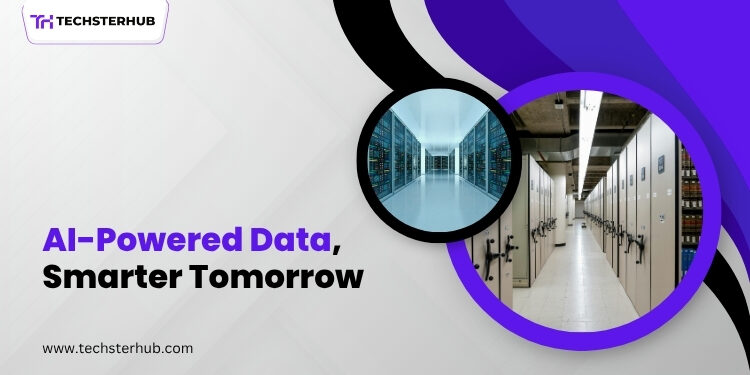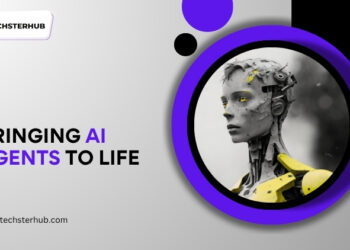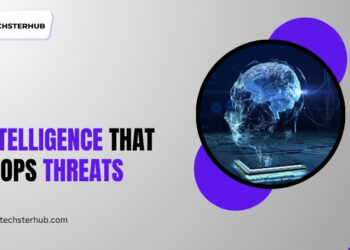The digital universe has been multiplying at a rapid rate skills unheard of. From enterprise analytics and AI-based applications to personal devices and IoT ecosystems – the amount of data being generated in the world is expected to reach hundreds of zettabytes in the next bi-decade or so. With this explosion comes an urgent need – how do we store, manage and retrieve data in ways which are efficient, scalable, secure and sustainable?
This is where the convergence of artificial intelligence (AI) and next-generation data storage comes into focus. Traditional storage models – rigid hierarchies of disks, tapes, rigid static architectures – are not capable any more. Businesses need smart, adaptive and predictive storage solutions to cope with the complexity of modern workloads.
In this article, we’ll explore the role of AI in shaping next-generation data storage, its technologies, benefits, challenges, and future directions.
Why Next-Generation Data Storage Matters
Data is the blood of transformation in the digital space. Every industry – from healthcare and finance to manufacturing and entertainment – uses searing amounts of data flows when making decisions, automating processes and providing customer experiences. But some of the critical limitations to traditional storage systems include:
- Scalability issues: Scalability issues: Legacy systems find it difficult to keep up with the exponential growth of data.
- Cost inefficiency: Keeping cold data or redundant data requires additional resources.
- Latency concerns: Time-sensitive applications like real-time analytics or autonomous systems cannot tolerate delays.
- Complexity in management: Managing hybrid or multi-cloud environments overwhelms IT teams.
- Security risks: Growing attack surfaces put sensitive data at constant risk.
DaaS: Next generation storage There is the next generation of storage that is designed for addressing these problems, cloud native architectures, software-defined storage (SDS), object storage, and emerging hardware innovations such as non-volatile memory express (NVMe), and DNA storage. Integrating intelligence (AI) on top of the architectures takes these left-brain systems from passive storage towards active intelligent systems.
The Role of AI in Next-Generation Data Storage
Even more, AI is not an add-on to storage solutions but is becoming the central nervous system. With powerful analysis of patterns, prediction of behaviors and automation of responses, at every layer AI allows optimization of storage.
Intelligent Data Tiering
Automated categorization determined by AI algorithms that place contents of data in distinct categories according usage patterns. Frequently accessed “hot” data is stored on high-performance storage whereas less frequently accessed “cold” data is moved to cheaper, slower tiers. Unlike conventional static policies, AI is able to continuously learn and adapt to changing workloads and deliver an optimal balance between cost and performance.
Predictive Maintenance
Storage hardware failures may shut down operations. AI Models Track Health Indicators (Temperature, Latency, Error Rates) Predictive Types – AI model tracks health indicators like temperature, latency, error rates etc. AI models predict the future failures before they occur. This helps to minimise downtime, reduces repair costs and ensures continuity of business.
Automated Information Lifecycle Management
AI helps in simplifying the complete lifecycle – all the way from generating data to classifying it and its archives to deletion. By automatically enforcing retention policies, compliance rules and deduplication – organizations maintain data hygiene without manual intervention.
Enhanced Storage Security
Cyber threats are focusing on data repositories. AI improves security and identifies anomalies in access patterns, flags unusual files modifications, and minimizes ransom attacks with fast and smart responses. Some AI-powered systems even make it to make unchangeable backups which are not in front of the attackers to write.
Optimizing the Resource Allocation
In cloud and hybrid environments, artificial intelligence (AI) – based orchestration helps extensor make sure workloads are distributed smartly on storage clusters, lowering latency as well as costs. This is extremely important to industries that are running AI/ML training pipelines, for which storage bottlenecks can stall productivity.
Metadata Enrichment & Search
With petabytes of unstructured data present, searching for relevant data files is like finding the needle in a haystack. AI enhances metadata, introduces the semantic meaning of information and provides the ability to search massive datasets in natural language – making the storage a dynamic knowledge base.
Core Technologies Powering AI in Next-Generation Storage
Several emerging technologies are converging to make AI-driven storage a reality:
- Software-Defined Storage (SDS): Decouples storage functions from hardware, allowing AI to dynamically manage capacity, performance, and availability.
- Object Storage: Suited for massive, unstructured data; AI enhances indexing, retrieval, and lifecycle policies.
- NVMe and NVMe-oF (over Fabrics): High-speed protocols that reduce latency, which AI leverages for real-time analytics workloads.
- Edge Storage Solutions: AI enables local processing and smart caching at the edge, reducing cloud dependency for IoT-heavy environments.
- DNA and Quantum Storage (Emerging): Though still experimental, AI is being explored for error correction, retrieval optimization, and efficient encoding schemes.
- Cloud-Native Storage APIs: Provide scalable, AI-friendly environments where intelligence is built into storage orchestration.
Benefits of AI Voice Enabled Storage in NextGen Storage
Organizations that are leveraging artificial intelligence to power their storage systems have a variety of benefits:
- Cost Efficiency: Automatic tiering and deduplication reduce overhead and storage waste.
- Performance Gains: Dynamic allocation ensures mission-critical workloads always get optimal resources.
- Stronger Security: AI-driven anomaly detection adds a layer of active protection against insider and outsider threats.
- Operational Simplicity: Automation minimizes manual intervention, freeing IT teams for higher-value tasks.
- Business Agility: With smarter storage, enterprises can adapt quickly to new workloads, applications, and compliance requirements.
- Sustainability: Intelligent storage reduces energy waste by optimizing data placement, aligning with green IT initiatives.
Use Cases of AI in Next-Generation Data Storage
Healthcare & Life Sciences
Hospitals are powerhouses of big data including imaging data, gene sequences, and electronic medical records. AI storage systems ensure compliance to HIPAA regulations of time retention, retrieval speed for urgent care not to mention archival.
Financial Services
Banks and insurers need high-performance, secure storage for fraud detection and trading calculator and compliance auditing on a time-to-time basis. AI-based tiering guarantees a fair balance between cost and low latency transactions.
Media & Entertainment
AI storage for massive video libraries, rendering pipelines and content delivery through ensuring fast access for editing and cost-effective archival for more vintage assets.
Manufacturing & IoT
With billions of connected sensors, makers depend on AI storage at the edge to filter, analyze and store IoT data to filter data and prevent latency in predictive maintenance processes.
AI/ML Research
Ironically, AI consumes all but storage. Next generation, intelligence built in storage is the assure efficient staging, indexing, and archiving of training data for large scale machine learning models.
Challenges surrounding AI Driven Data Storage
While promising, AI-enabled storage introduces challenges organizations must address:
- Data Privacy & Compliance: Automating storage must not conflict with GDPR, HIPAA, or industry-specific regulations.
- Integration Complexity: Legacy systems may not easily integrate with AI-driven storage platforms.
- Bias & Misclassification: AI algorithms may misclassify data, leading to compliance or performance issues.
- Cost of Implementation: Advanced storage systems with embedded AI can be expensive to deploy and manage initially.
- Skill Gaps: IT teams need new skills to manage, audit, and tune AI-driven systems.
The Future of Next-Generation Data Storage with AI
The trajectory of AI-driven storage suggests an exciting future:
- Self-Managing Storage: Fully autonomous systems that configure, optimize, and secure themselves with minimal human input.
- Federated Data Management: AI ensuring compliance and control across hybrid, multi-cloud, and on-premises environments.
- Sustainability-First Storage: AI prioritizing low-energy storage allocation to align with carbon-neutral goals.
- Integration with Generative AI: Storage that intelligently serves generative models, optimizing access to multimodal datasets.
- Hyper-Personalized Data Retrieval: This is made possible by AI-powered semantic search which then retrieves information in ways that are consistent with user context and intent.
Finally, the storage of the future will develop into a living system, with AI keeping it as efficient, resilient and secure as possible as data volumes continue to grow and multiply.
Conclusion
The explosion of world data makes a radical rethinking of the way we store, and manage this type of data a necessity. Next-generation data storage, powered by AI, represents not just an evolution of infrastructure but a transformation of how businesses extract value from information.
By making storage intelligent, organizations not only gain agile, resilient and forward-thinking-which is what needed to mirror what it needed to do to gain an edge in its era defined by data. From predictive maintenance to smart tiering and supporting security, AI makes sure that storage is no longer a bottleneck but a strategic enabler.
The role of AI in next-generation data storage is clear: it is not merely an add-on but the foundation of future-ready, intelligent data ecosystems. Businesses with their operational foot in the door in respect of, to date, “Abingdon in the Dark,” will be the best hours to thrive in a data-floundering economy, ahead.











